Getting Flat Feet? Meet the Spring Ligament
My feet are getting flat. In fact, that’s causing some pain in the top of my foot at the end of the day. So what’s going on? What does that have to do with the Spring Ligament? Let’s dig in.
What Are Flat Feet?
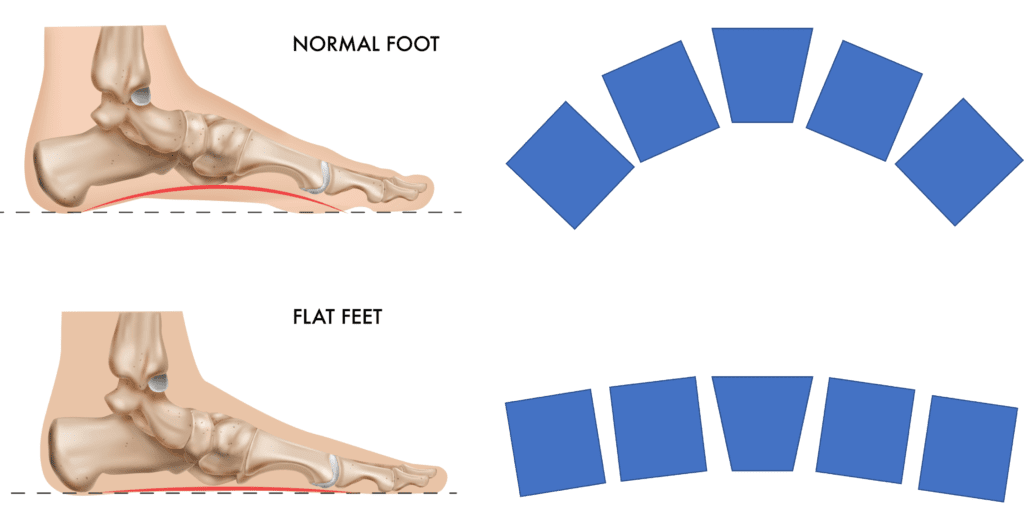
Our feet have a natural Arch. Why? Because it’s part of the shock-absorbing system that protects your joints. In addition, it literally provides the “spring” in your step.
In the diagrams I created above, the normal foot can be represented by the type of Arch you see created in brick throughout Victorian structures. There’s a keystone (topmost brick) that acts as the main force transfer between parts of the Arch. Our foot bones act in the same way. When the Arch is lost, that’s called “Flat Feet”. Today we’ll learn about the Spring Ligaments that help maintain this Arch.
What Happens When the Arch Collapses?
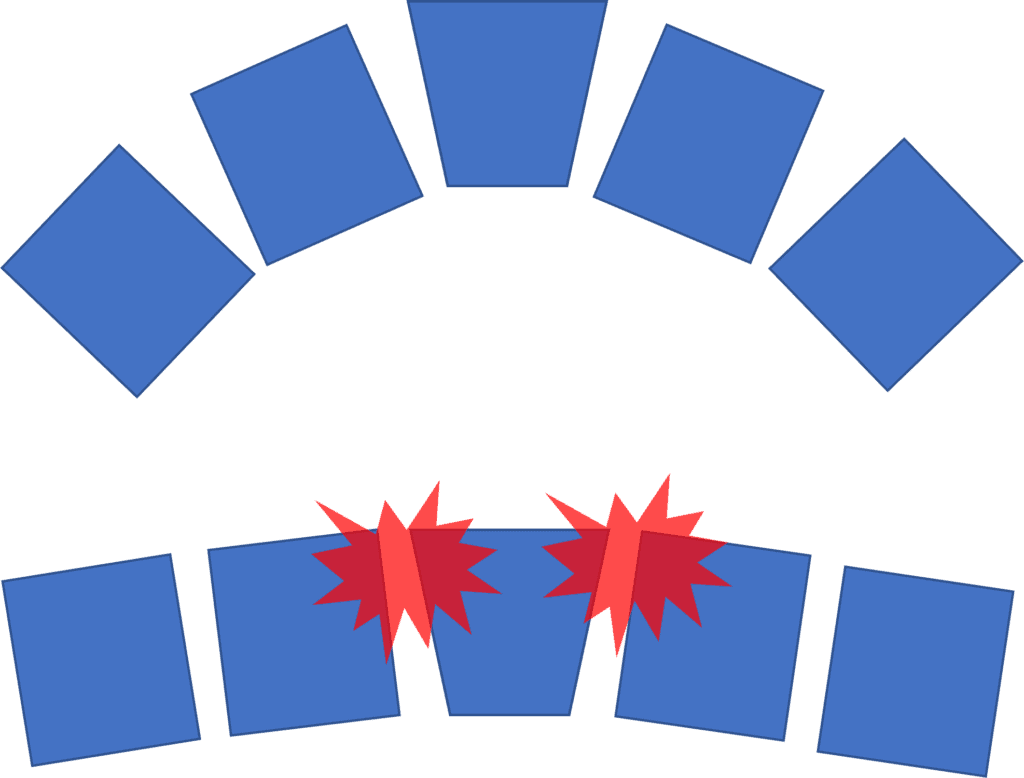
When you lose your Arch, like my feet, the bones at the top of the Arch begin to bang into each other. This causes the joints here to get overloaded and become arthritic:
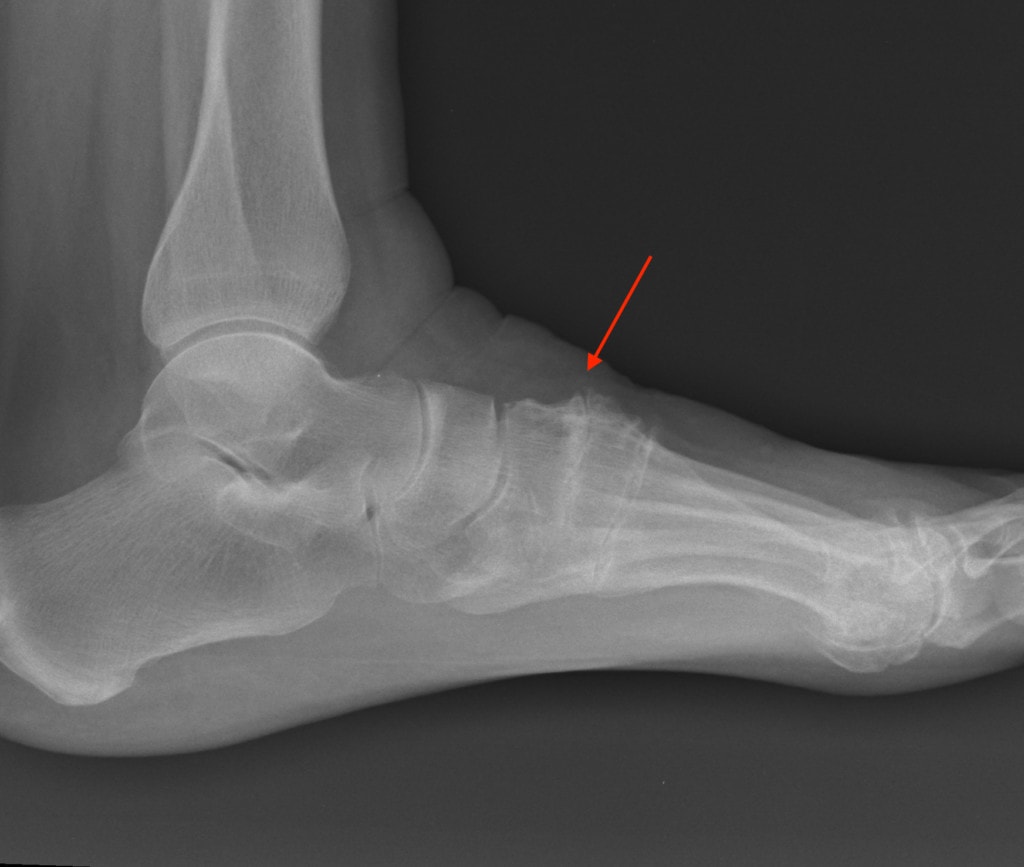
Biomechanical Changes or Running in Lead
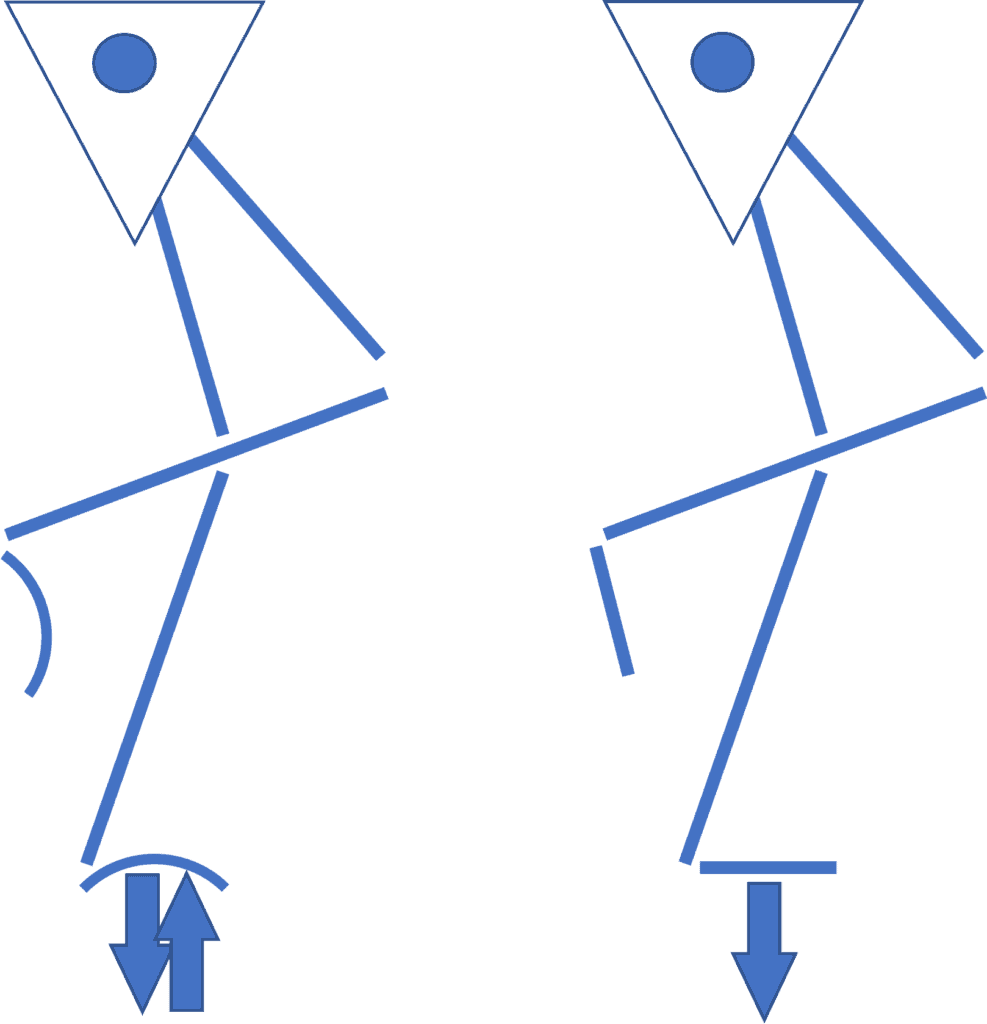
So how critical is that Arch? If you’re running, as shown above, when the Arch in your foot hits the ground, it transfers the load to the Arch which then transfers most of it back. That’s the spring you feel. However, without an Arch, your force gets transferred to the ground but very little gets transferred back. Hence, you feel like you’re running in lead.
What Holds Up the Arch?
With the foot taking hundreds of pounds of force with every step, how is this shock-absorbing Arch maintained? By ligaments. These are usually collectively referred to as the “Spring Ligaments”:
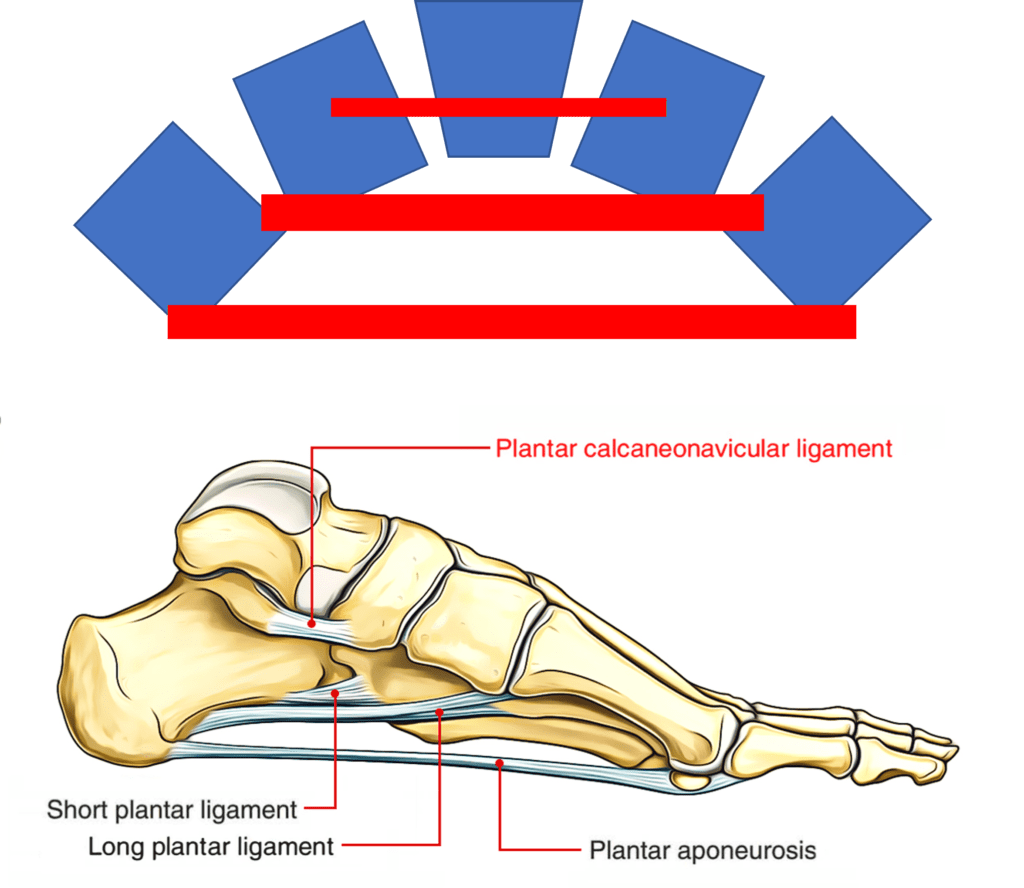
These ligaments travel horizontally at different levels of the Arch. When they get loose, the foot loses the arch and becomes flat. These are also the ligaments that stretch when under load and spring back to transfer that load back to the foot and leg.
Can a Flat Foot Be Fixed?
Yes, but it’s always better to catch this problem early in its evolution. That’s just when you’re beginning to notice that you’re losing that “spring” in your step as you age. I regrettably missed that window, being too busy with other things, as for me that began happening a decade or more ago. If I wanted to have our doctors try to improve my Arch, what would that look like?
First, Support the Arch
First, I would get orthotics made that support my Arch. The goal would be to take the weight off of these ligaments.
Second, Inject the Ligaments
Next, I would have high-dose PRP injected precisely into the spring ligaments using ultrasound guidance. This procedure needs to be carefully performed as the Tibial nerve is close, which needs to be avoided. This may take several injections over several months while wearing the Arch supports to get some spring back in my step.
The upshot? The Spring Ligaments support the Arch in your foot. Once you begin to lose that Arch, it feels like you’re losing that spring in your step. Once the foot collapses, trying to run feels like your legs are heavy because you’re no longer able to gain that push back from the ground generated by the Arch. Eventually, Arthritis will begin to happen at the top of the Arch. Hence, if that’s you, you may want to get in for an exam to see if precise PRP injections into the Spring Ligaments are a good solution.

NOTE: This blog post provides general information to help the reader better understand regenerative medicine, musculoskeletal health, and related subjects. All content provided in this blog, website, or any linked materials, including text, graphics, images, patient profiles, outcomes, and information, are not intended and should not be considered or used as a substitute for medical advice, diagnosis, or treatment. Please always consult with a professional and certified healthcare provider to discuss if a treatment is right for you.
